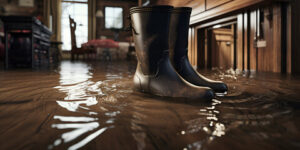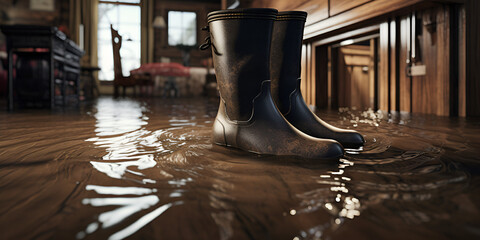Water leaks, water intrusion, and construction defects can cause builder problems and cost overruns in the construction of residential homes, townhomes, condos, and commercial buildings. Water Intrusion Specialist Near Me specializes in providing warranty claims, forensic leak detection, and inspections.
Several factors determine the costs of an inspection or testing. This includes equipment needed to access the area of concern and the location of the problem.
When your water intrusion problem is serious, it’s time to call in a team of experts. These professionals can help you find the source of your issue and make recommendations for long-term repairs. While some people may think of destructive testing as a way for sledgehammers to be thrown at walls, the right team of specialists will use forensic and scientific approaches that are designed to lessen the impact on your building’s structure.
Destructive tests, also known as physical or mechanical testing, involve using tools, machines and processes that cause irreversible damage to materials or products in order to learn more about their characteristics. They are often used to identify the limits of a material or piece of equipment, detect weaknesses in its design, and establish safety and performance standards. They include tensile, compression and fatigue testing, hardness and corrosion testing.
These tests are often done before a product goes into production, for example industrial boilers are tested to determine how much pressure they can handle. This ensures that only high-quality boilers are built, ensuring the maximum possible safety margin. They are also used to test the durability of safety equipment such as fire extinguishers.
While there are many legitimate reasons for companies to conduct destructive testing, this type of testing is not without its drawbacks. It is expensive, requires a lot of expertise and equipment, and can lead to the loss or damage of data or materials. In addition, it focuses on pre-determined scenarios and can miss unexpected vulnerabilities or weaknesses that would only surface in real-world conditions.
As a result, the best approach to water intrusion problems is often a combination of non-destructive and destructive testing. A qualified team of professional moisture intrusion specialists will be able to use both methods to produce the most accurate and complete results. This will save you money, time and frustration down the road. Moisture intrusion problems can escalate rapidly, turning that small water stain on the ceiling into a mold problem or structural damage that could cost you thousands of dollars in the future.
Visual Inspection
Visual inspection is the process of examining an object or structure to determine whether it meets certain standards. This type of inspection is used in a variety of industries, including construction and manufacturing. It’s also common in the food and pharmaceutical industries to ensure safety and quality. In fact, the FDA sets standards for visual inspections of products in the pharmaceutical industry.
The most common use of visual inspection is the human eye, although other senses can be employed as well. For example, sound or touch can be used in conjunction with visual inspections to check for problems. For example, a technician who is inspecting a weld may knock on the weld and make a judgment based on the sounds produced. This is a type of non-destructive testing (NDT).
As technology advances, visual inspection is being replaced by new tools and methods to improve efficiency, accuracy, and safety. New tools include drones, AI-driven image analysis, and remote inspection capabilities. These tools are transforming the industry by enhancing productivity and data quality. They are making it easier to identify and repair defects, saving companies time and money.
Depending on the nature of the inspection, there are many different types of visual inspections. Some are conducted by human inspectors using their naked eyes. Others require the use of special aids, such as flashlights or magnifying glasses. These aids are necessary to help the inspector detect any form of damage or defect.
Water intrusion specialists are highly trained and experienced in detecting moisture and leaks. The best ones have years of experience performing forensic leak testing and are laboratory trained to understand window and wall construction and performance. It’s important for any company offering forensic leak testing in Los Angeles to be qualified and experienced in the field.
If you suspect that there is a problem with your home or business and need to perform a water test, contact RayAccess for more information. Our experts can help you find the source of your problem and offer the most accurate and cost-effective solution. Our team will provide you with the peace of mind that your property is protected.
Thermal Imaging
Infrared or thermal imaging is the use of a special camera to detect invisible radiation (heat) emitted from objects. The device produces a visual representation of the relative distribution of object temperatures across a scene, making it possible to visualize hot spots that may indicate a problem. Thermography is often used in fire detection and hazard evaluation. It also plays a key role in monitoring wildlife and locating missing people during disasters. Thermography is a highly effective means of non-invasively examining a large area, without damaging the structure.
In fact, thermal cameras are so popular that there are a number of ‘thermal’ or ‘infrared’ photo apps available for Apple iOS and Android smartphones. These are mostly simulations, however, and do not produce true IR images. True IR imaging requires specialized equipment, such as FLIR.
The sensitivity of the FLIR thermal imaging cameras allows for the accurate and non-destructive identification of rain related moisture intrusion in walls, ceilings and roofs. This technology is a critical tool in Water Intrusion Specialist’s toolkit and is crucial to the success of our leak detection services.
FLIR is used in numerous industrial applications including process monitoring, condition monitoring and quality control, such as detecting liquid levels in opaque containers and inspecting electrical or mechanical equipment. It is also widely used in military and defense applications, including aircraft navigation and targeting systems, night vision goggles, handheld and head-mounted thermographers, and a variety of missile and ground combat weapons sights.
A specialized thermal imager can be used to locate survivors in low-visibility conditions, such as those caused by smoke, dust, fog or ash, or to determine if a fire is active or buried underground. The resulting imagery can help to pinpoint the location of an unidentified source of heat, thus allowing firefighters to better focus their efforts at tackling the fire. In addition, a thermal imager can be used to survey wildfires after they have burnt out to determine if there are still sources of heat that may cause further problems.
The infrared sensors of a FLIR thermal imaging camera allow it to create quality imagery with a color palette that makes it easy to interpret and identify problem areas. For example, a thermographer can easily see that shades of blue represent cooler temperatures, while shades of red indicate warmer areas. The ability to identify and accurately locate a variety of temperatures within a structure is vital in determining the best course of action for repairs and restoration.
Mold Testing
Mold is more than just a nuisance, it can be harmful to occupants health. It can exacerbate allergies, cause asthma attacks and other respiratory issues. If you suspect mold in your home, contact us for a professional inspection. Our inspections will begin with a discussion with the client to identify problem areas, mold concerns and health issues. Then a multi-point exterior and interior inspection will be conducted. This will include a visual check for mold, humidity and temperature readings, as well as an inspection of the HVAC system.
Depending on the results of the visual inspection and interview, recommendations may be made to collect laboratory samples. Samples are collected by either non-viable or viable air sampling. Non-viable samples operate by running the air through a device that impacts on a sticky substance, collecting the mold spores which are then sent to a lab for identification. Viable samples work the same way except that a petri dish with a food source is used instead of a sticky surface. The spores grow over time, allowing the lab to identify them.
Another way that mold is detected is by olfactory testing. An experienced inspector can detect the odors associated with active growing molds. However, olfactory tests are subject to a variety of factors including weather conditions and ambient fragrances that can dilute or mask the odors.
During the course of an investigation, moisture meters, thermal imaging cameras and infrared thermographs may be used to determine if water intrusion is occurring. Infrared is particularly useful in determining if surface temperatures are normal or if there are significant differences in temperatures which could indicate hidden moisture problems. In some cases, the use of a spray rack is required to recreate leaking conditions and to test for water damage and leaks. This additional equipment is an added cost to the inspection and will vary in price based on the type of test being performed. A good understanding of construction, building codes and a wide range of testing standards is essential for a water intrusion specialist. This allows the inspector to quickly recognize how and why water enters a structure and to recommend the proper remediation process.
